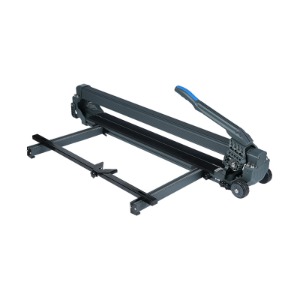
Laser tile cutters have become essential tools in the construction and interior design industries. They provide precise cutting, smooth edges, and efficient workflow for a wide range of tile materials. For buyers and users, understanding how a laser tile cutter manufacturer tests performance can help ensure reliability and quality.
Initial Calibration and Alignment
Before a laser tile cutter can be tested, manufacturers begin with calibration. Ensuring that the laser beam is accurately aligned is crucial for precise cutting. This process involves checking the beam's trajectory, focus, and stability across the working area.
A reliable laser tile cutter manufacturer will also verify that all mechanical components, such as rails, motors, and clamps, are functioning smoothly. Proper alignment reduces errors and ensures consistent cuts, which is critical when handling expensive or delicate tiles.
Cutting Accuracy Tests
One of the most important performance indicators is cutting accuracy. Manufacturers test the machine by performing trial cuts on various tile types, including ceramic, porcelain, and natural stone. These tests measure the precision of the cut lines, the uniformity of shapes, and the consistency of edge quality.
During these tests, manufacturers may use templates or digital measuring tools to compare the output against the intended design. Any deviation can indicate a need for adjustment or calibration, helping the laser tile cutter manufacturer maintain high standards.
Speed and Efficiency Evaluation
Beyond accuracy, cutting speed is another key factor. Manufacturers evaluate how quickly the laser cutter can complete a range of cuts without compromising quality. This includes testing the machine under continuous operation to assess its efficiency and performance stability.
By simulating real-world conditions, manufacturers can determine whether the cutter can handle the demands of busy workshops or large construction projects. Performance data from these tests is often used to provide guidance for users on optimal operating parameters.
Safety and Durability Testing
Safety is a crucial aspect of performance testing. Manufacturers check protective features such as laser shielding, emergency stop functions, and interlocks to ensure operator safety. They also assess the durability of the machine components, including the laser source, motors, and control systems, under extended use.
A thorough evaluation helps the laser tile cutter manufacturer identify potential weak points and implement improvements. This not only ensures machine longevity but also provides a safer experience for end-users.
Consistency Across Different Materials
Since tiles vary in hardness, thickness, and composition, manufacturers test the cutter on multiple materials. This ensures that the machine maintains consistent cutting quality regardless of the tile type. Adjustments to laser power, speed, or cutting technique may be made to accommodate different materials.
By verifying performance across a range of tiles, a laser tile cutter manufacturer can offer machines that are versatile and reliable in various applications
Testing a laser tile cutter involves multiple steps, including calibration, accuracy checks, speed evaluation, safety verification, and material-specific trials. A careful and systematic approach allows a laser tile cutter manufacturer to ensure that each machine delivers precise, efficient, and safe performance. Understanding these testing methods provides confidence for buyers and operators, highlighting the reliability of laser cutting technology in modern tile installation.


 English
English русский
русский Español
Español italiano
italiano